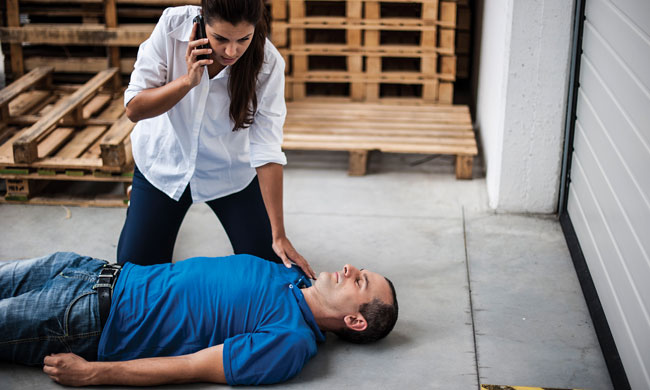Health
Be Ready to Save a Life: Understanding the 2 steps of Hands-Only CPR

(Family Features) Every year, 350,000 people die from cardiac arrest in the United States. However, hands-on emergency intervention like cardiopulmonary resuscitation – or CPR – from a bystander can make the difference between life and death in sudden cardiac arrest emergencies.
In fact, immediate CPR can double or triple a cardiac arrest victim’s chance of survival, according to the American Heart Association. During the first few minutes an individual is suffering from cardiac arrest, chest compressions can help keep blood flow active and push remaining oxygen through the body to keep vital organs alive, which extends the opportunity for a successful resuscitation once trained medical staff arrive.
Because 88% of cardiac arrests – electrical malfunctions in the heart that cause an irregular heartbeat (arrhythmia) and disrupt the flow of blood to the brain, lungs and other organs – occur at home, it is often a friend or family member who witnesses a child, spouse, parent or friend going into cardiac arrest. As survival can depend on how quickly CPR is started, compression-only CPR, or Hands-Only CPR, is recommended for use by people who see a teen or adult suddenly collapse in an out-of-hospital setting such as at home, work or in a park.
“By equipping people with Hands-Only CPR training, we are empowering them to spring into action if a loved one needs help, as the majority of cardiac arrests occur at home,” said Dr. Anezi Uzendu, M.D., interventional cardiologist and American Heart Association volunteer.
As part of the World Restart a Heart Day initiative, the American Heart Association aims to increase awareness about the importance of bystander CPR through its Hands-Only CPR campaign, nationally supported by the Elevance Health Foundation, and offers these two simple steps:
- Call 911 (or send someone to do that).
- Push hard and fast in the center of the chest of the individual experiencing cardiac arrest.
Using the beat of a familiar song with 100-120 beats per minute, such as “Stayin’ Alive” by the Bee Gees, can help you stay on pace with the necessary compressions.
“Being able to efficiently perform Hands-Only CPR in the moment can mean the difference between life and death, and by following these two simple steps we can increase someone’s chance of survival from cardiac arrest,” said Shantanu Agrawal, M.D., board certified emergency medicine doctor and chief health officer at Elevance Health. “As a longstanding supporter of the American Heart Association, we remain focused on working together to improve health inequities in our communities by expanding access to training and increasing the number of people who learn and feel confident performing Hands-Only CPR to save lives.”
To find more information and resources, visit heart.org/CPR.
6 Links in the Adult Out-of-Hospital Chain of Survival
When properly executed, a strong chain of survival – or series of actions – can improve the chances of survival and recovery for victims of sudden cardiac arrest. Hands-Only CPR is a critical step in the American Heart Association’s Chain of Survival, which also includes:
- Activation of Emergency Response: Recognize symptoms of cardiac arrest and call 911.
- High-Quality CPR: Push hard and fast in the center of the victim’s chest until emergency personnel arrive.
- Defibrillation: Use an automated external defibrillator (AED) to restart the victim’s heart and reset it to a healthy rhythm.
- Advanced Resuscitation: Medical professionals provide additional life-saving medical services.
- Post-Cardiac Arrest Care: Transport victim to an appropriate hospital or treatment facility to optimize survival, organ function and neurological recovery.
- Recovery: Survivors receive additional treatment, observation, rehabilitation and psychological support to aid in recovery and help prevent recurrent cardiac arrest.
Photo courtesy of Getty Images
SOURCE:
American Heart Association
